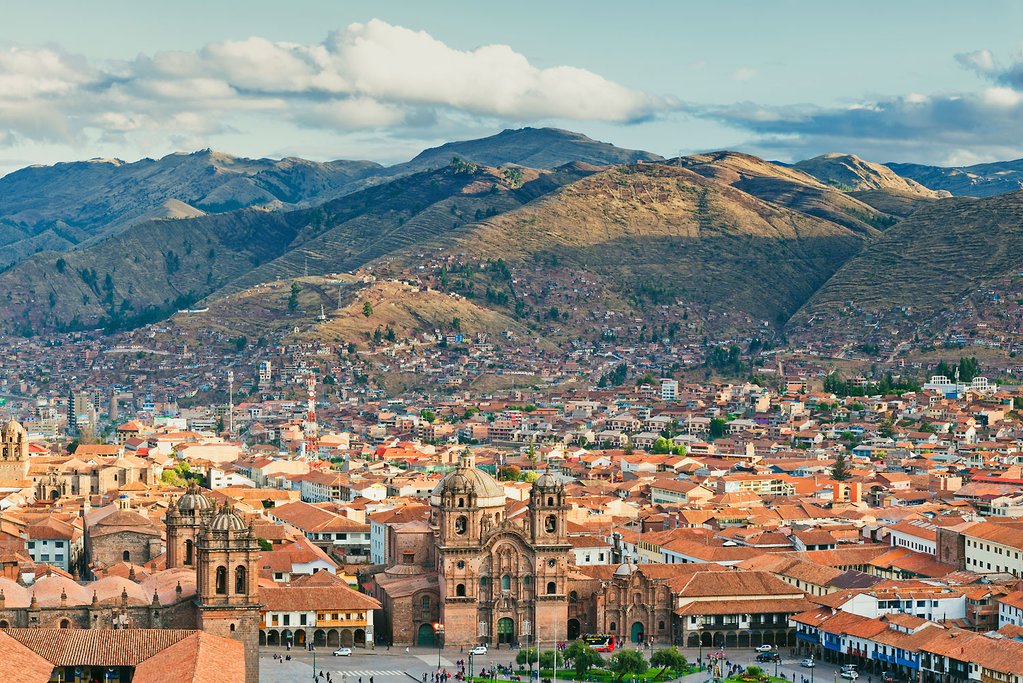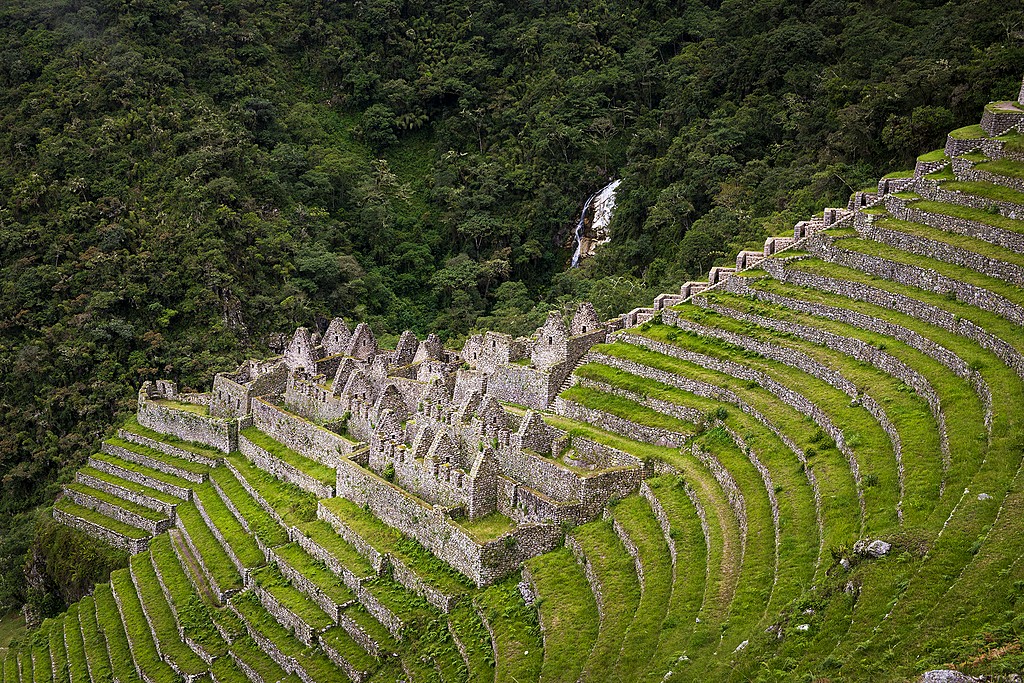Highlights
- Walk the streets of the ancient Incan capital of Cusco
- Hike the legendary Inca Trail
- Spend a day immersed in the history of Machu Picchu
- Explore the Inca ruins of the Sacred Valley
Brief Itinerary
| Day | Highlights | Overnight |
|---|---|---|
| Day 1 | Arrival in Lima | Lima |
| Day 2 | Fly to Cusco, Exploring the City | Cusco |
| Day 3 | Cusco City Tour | Cusco |
| Day 4 | Inca Trail Day 1/4: Cusco to Yuncachimpa | Yuncachimpa |
| Day 5 | Inca Trail Day 2/4: Yuncachimpa - Warmihuañusca Pass - Chaquicocha | Chaquicocha |
| Day 6 | Inca Trail Day 3/4: Chaquicocha - Phuyupatamarca - Wiñayhuayna | Wiñayhuayna |
| Day 7 | Inca Trail Day 4/4: Wiñayhuayna - Machu Picchu - Ollantaytambo | Ollantaytambo |
| Day 8 | Sacred Valley Tour: Ollantaytambo - Moray - Maras - Cusco | Cusco |
| Day 9 | Fly from Cusco to Lima, Depart Peru |
Detailed Itinerary
Day 1: Arrival in Lima

¡Bienvenidos! Welcome to Lima, Peru's largest city and central metropolitan hub, and home to one-third of the country's population. Located at the site of a pre-Columbian indigenous Ychsma settlement, which was conquered by the Inca empire in the 15th century and later by the Spanish conquistadores, Lima has a fascinating history and a diverse mix of cultures. Amerindian, European, Afro-Peruvian, and Asian—especially Chinese and Japanese—influences make Lima a dynamic and exciting city to explore.
Lima's breezy location on the Pacific Ocean and mild desert climate make it a perfect city for exploring on foot. Head downtown to mingle with locals, stretch your legs, and grab a bite to eat in one of many award-winning restaurants.
Suggested activities include:
- Explore the historic center of Lima, a UNESCO World Heritage Site packed with fascinating Spanish architecture. Start with a scenic tour of the colonial downtown, which emanates from the main square. Stroll over to the 16th-century Cathedral, which took 80 years to construct and was built in the grandiose style of the Spanish empire.
- Visit Casa Aliaga, a colonial mansion granted by chief conquistador Francisco Pizarro to Jerónimo de Aliaga, one of his captains, in 1535. This is the only house from that era that still belongs to the same family.
- Stroll around the Pueblo Libre district to the privately owned Larco Museum of pre-Columbian art, housed in a beautifully restored viceregal mansion built over a seventh-century pre-Columbian pyramid. The museum boasts a vast pre-Colonial collection of gold and silver artifacts.
- In the evening, head to the eclectic "Love Park" in the upscale coastal district of Miraflores, where you can admire a huge kissing statue and beautiful mosaic walls. The park is built on the cliffs of Chorrillos and is a perfect place to enjoy a spectacular sunset over the Pacific.
- Enjoy a nightcap at an open-air cafe or restaurant in the diverse Miraflores neighborhood.
Day 2: Fly to Cusco, Exploring the City

Head to the Lima airport for your transfer flight to Cusco. This ancient city is the former capital of the Inca empire, which reigned from the 13th to 16th centuries after conquering the Killke settlement in the same location.
Remember: you will be 11,000 feet above sea level, so take it easy and remember to drink lots of water. Since Cusco was designed by the Incas as a city for walking, start your exploration of the narrow stone alleyways on foot. Take a walk through the plaza—if the weather is beautiful, it's a great place to sit on a balcony and have a cup of coca tea while adjusting to the elevation.
Suggested activities include:
- See the Cathedral, the most imposing monument in the central Plaza de Armas and a repository for Cusco's colonial art. Its construction lasted for almost 100 years, beginning in 1560 and ending in 1654.
- Discover the elaborate Puca Pucara ruins—an architectural complex with multiple plazas, baths, aqueducts, walls, and towers. It is believed that the entourage of the Incan emperor used it while he stayed at Tambomachay, the elaborate estate and baths nearby.
- Explore San Blas, an old bohemian quarter famous for its picturesque white walls, blue doors, and creative artisan community.
- Eat lunch at a local Peruvian restaurant and sample local flavors and cooking techniques—crackling pork, pickled vegetables, seasonal flavors, bread baked in earthen ovens, roasted vegetables, and sweet donuts make for a delicious and filling meal.
Day 3: Cusco City Tour

Today's tour will begin at the local San Pedro Market. The locals shop at this market every day in order to stock up on produce and groceries. The market is located indoors and includes many different food stalls and vendors. Be sure to try their endless selection of fresh fruit smoothies, a wonderfully refreshing treat.
From the market, head to the most important temple of the Inca Empire, the Sun Temple, known as Qoricancha. Inside the temple, you will see smaller temples dedicated to the moon, rainbow, stars, lightning, and thunder, among others.
From Qoricancha, walk to an important religious site called Sacsayhuaman. Although the site was religious, the Spanish considered it a military fortress because of its location and the style in which it was built. After your tour, head back to your hotel for some rest.
Chat with a local specialist who can help organize your trip.
Day 4: Inca Trail Day 1/4: Cusco to Yuncachimpa

Start your morning early, leaving Cusco for the Sacred Valley. Stop briefly in Ollantaytambo for breakfast, then continue to the start of the Inca Trail. Beginning the trek, cross the Urubamba River and head uphill for an easy trek, and a good warm-up for the following days. Reach Miskay by lunchtime and stop for a picnic by a small river. After lunch, explore the nearby archaeological site of Llactapata, then continue the hike to Wayllabamba, located at an altitude of 10,170 feet. From here, ascend to Yuncachimpa, your campsite for the night. Enjoy sweeping views of Willka Weqe Mountain and the surrounding landscape over dinner.
Level of difficulty: Moderate
Hiking time: 6-7 hours
Total distance: 6.8 miles
Day 5: Inca Trail Day 2/4: Yuncachimpa - Warmihuañusca Pass - Chaquicocha

During the second day of hiking on the Inca Trail, you are free to walk at your own pace. Meet back up with the group for short rest breaks and on long ascents, but walk the rest of the day at your own leisure.
Start the day by trekking through the Valley of Llulluchapampa (12,631 ft), a steep 1.8-mile hike through humid woodlands. From here, follow the path for another 2-3 hours to Warmihuañusca Pass at 11,3780 feet. Translated as Dead Woman Pass, this section of the hike is the most difficult part of the trail. After a break at the summit, continue the hike down a long and steep descent toward the Pacaymayo River. Cross Runkurakay Pass at 10,007 feet before reaching Chaquicocha, your campsite for the night. Enjoy the stunning view of the Andes Mountains from 11,975 feet and relax after a hard day on the trail.
Level of difficulty: Challenging
Hiking time: 8-9 hours
Total distance: 9.3 miles
Day 6: Inca Trail Day 3/4: Chaquicocha - Phuyupatamarca - Wiñayhuayna

The third day on the trail brings you through a variety of landscapes and Inca architecture. You will see a change in the ecosystem as you walk into the tropical forest of Wiñaywayna. Pass by several small lakes, through small Inca tunnels, and over a couple of high-altitude passes before reaching the Wiñayhuayna ruins. Translated as "Forever Young," this elaborately engineered site is built into a steep hillside above the Urubamba River. Two separate building complexes are connected by a series of terraces, which were once used for agriculture. From here, the Inca stairs turn into a zigzagging trail that ascends until you reach a white, red-roofed building—your last campsite.
Level of difficulty: Moderate
Hiking time: 5-6 hours
Total distance: 6.2 miles
Day 7: Inca Trail Day 4/4: Wiñayhuayna - Machu Picchu - Ollantaytambo

Today you'll get a very early start onto the trail to catch the sunrise over Machu Picchu. After breakfast, head back onto the trail toward Inti Punku (Sun Gate) to watch the sun come up over Machu Picchu and Wayna Picchu. Then descend one hour to the archaeological ruins.
This 15th-century Inca citadel, located at 7,970 feet, is a masterpiece of engineering that served as a sanctuary and retreat for the Incan Emperor Pachacutec and his royal court. Machu Picchu, which means "Old Mountain," is considered a World Heritage Site by UNESCO and is one of the new Seven Wonders of the World.
Built as a seasonal residence, Machu Picchu was rarely home to more than 800 people, and during the royals' absence, just 100 servants would remain at the site to maintain the grounds. Machu Picchu was abandoned 100 years after construction due to the Spanish conquest and remained largely hidden to the outside world until the early 20th century.
Your guide will lead you around the site and explain the different buildings and curious corners of the building complex. Approximately one-third of the site has been reconstructed into its original structure, giving visitors a sense of the grandeur and artistry of the original citadel.
After the tour, explore the site on your own—walk up to the Inca Bridge, discover various buildings within the site, or climb Wayna Picchu for panoramic views. Later, catch a bus down to Aguas Calientes and soak your aches and pains away in the town's hot springs. Depart from Aguas Calientes in the afternoon, and make your way to the small historic town of Ollantaytambo. Check into your hotel for some well-deserved rest and relaxation.
Level of difficulty: Moderate
Hiking time: 2-3 hours
Total distance: 4.3 miles
Day 8: Sacred Valley Tour: Ollantaytambo - Moray - Maras - Cusco

This morning, explore Ollantaytambo's stone fortresses, archeological ruins, and cobblestone streets, which remain remarkably intact similar to their original appearances after construction by the Inca. Next, head to the village of Chinchero, believed by the Inca to be the birthplace of the rainbow. You will see extensive Inca terraces and several small colonial-era churches before exploring Chinchero's famous textile production and weaving crafts. Tour a weaver's studio and learn about the process of cleaning and producing the wool, then browse the selection of vibrant textiles for the perfect handmade gift.
Continue to Moray, a series of incredible stone amphitheaters built by the Inca. Considered one of the world's most innovative and architecturally advanced cultures, the Inca likely used these stone complexes for experimental agriculture in micro-climates.
From Moray walk (or take a bus) to the Salineras—the Maras Salt Flats—an intricate network of stone pools developed by the Inca to harvest salt through evaporation. These salt flats are still in use today and are carefully maintained by a close community with regulations and rules that date back to the time of the Inca.
Afterward, continue back to Cusco to spend one night.
Day 9: Fly from Cusco to Lima, Depart Peru

Today is your last day in Peru. You will be met at your hotel for a transfer to the Cusco Airport, where you'll catch your flight back to Lima and then transfer to your international departure. Alternatively, stay and extend your time in Peru: there's so much to see and explore. ¡Buen viaje!
